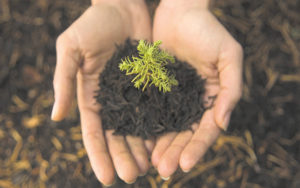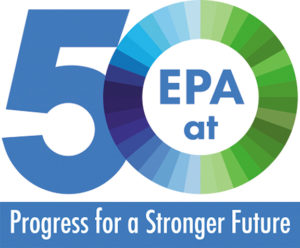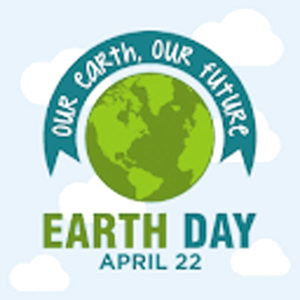 Did you know? A highlight of the United Nations’ Earth Day celebration in New York City is the ringing of the Peace Bell, a gift from Japan, at the exact moment of the vernal equinox.
Did you know? A highlight of the United Nations’ Earth Day celebration in New York City is the ringing of the Peace Bell, a gift from Japan, at the exact moment of the vernal equinox. Who Started Earth Day?
Elected to the U.S. Senate in 1962, Senator Gaylord Nelson, a Democrat from Wisconsin, was determined to convince the federal government that the planet was at risk. In 1969, Nelson, considered one of the leaders of the modern environmental movement, developed the idea for Earth Day after being inspired by the anti-Vietnam War “teach-ins” that were taking place on college campuses around the United States. According to Nelson, he envisioned a large-scale, grassroots environmental demonstration “to shake up the political establishment and force this issue onto the national agenda.”
Nelson announced the Earth Day concept at a conference in Seattle in the fall of 1969 and invited the entire nation to get involved. He later recalled:
 “The wire services carried the story from coast to coast. The response was electric. It took off like gangbusters. Telegrams, letters and telephone inquiries poured in from all across the country. The American people finally had a forum to express its concern about what was happening to the land, rivers, lakes and air—and they did so with spectacular exuberance.”
“The wire services carried the story from coast to coast. The response was electric. It took off like gangbusters. Telegrams, letters and telephone inquiries poured in from all across the country. The American people finally had a forum to express its concern about what was happening to the land, rivers, lakes and air—and they did so with spectacular exuberance.” Dennis Hayes, a young activist who had served as student president at Stanford University, was selected as Earth Day’s national coordinator, and he worked with an army of student volunteers and several staff members from Nelson’s Senate office to organize the project. According to Nelson, “Earth Day worked because of the spontaneous response at the grassroots level. We had neither the time nor resources to organize 20 million demonstrators and the thousands of schools and local communities that participated. That was the remarkable thing about Earth Day. It organized itself.”
The First Earth Day: April 22, 1970
On the first Earth Day on April 22, 1970, rallies were held in Philadelphia, Chicago, Los Angeles and most other American cities, according to the Environmental Protection Agency. In New York City, Mayor John Lindsay closed off a portion of Fifth Avenue to traffic for several hours and spoke at a rally in Union Square with actors Paul Newman and Ali McGraw. In Washington, D.C., thousands of people listened to speeches and performances by singer Pete Seeger and others, and Congress went into recess so its members could speak to their constituents at Earth Day events.
The first Earth Day was effective at raising awareness about environmental issues and transforming public attitudes. According to the Environmental Protection Agency, “Public opinion polls indicate that a permanent change in national priorities followed Earth Day 1970. When polled in May 1971, 25 percent of the U.S. public declared protecting the environment to be an important goal, a 2,500 percent increase over 1969.” Earth Day kicked off the “Environmental decade with a bang,” as Senator Nelson later put it. During the 1970s, a number of important pieces of environmental legislation were passed, among them the Clean Air Act, the Water Quality Improvement Act, the Endangered Species Act, the Toxic Substances Control Act and the Surface Mining Control and Reclamation Act. Another key development was the establishment in December 1970 of the Environmental Protection Agency, which was tasked with protecting human health and safeguarding the natural environment—air, water and land.
What Do You Do For Earth Day?
 Since 1970, Earth Day celebrations have grown. In 1990, Earth Day went global, with 200 million people in over 140 nations participating, according to the Earth Day Network (EDN), a nonprofit organization that coordinates Earth Day activities. In 2000, Earth Day focused on clean energy and involved hundreds of millions of people in 184 countries and 5,000 environmental groups, according to EDN. Activities ranged from a traveling, talking drum chain in Gabon, Africa, to a gathering of hundreds of thousands of people at the National Mall in Washington, D.C. Today, the Earth Day Network collaborates with more than 17,000 partners and organizations in 174 countries. According to EDN, more than 1 billion people are involved in Earth Day activities, making it “the largest secular civic event in the world.”
Since 1970, Earth Day celebrations have grown. In 1990, Earth Day went global, with 200 million people in over 140 nations participating, according to the Earth Day Network (EDN), a nonprofit organization that coordinates Earth Day activities. In 2000, Earth Day focused on clean energy and involved hundreds of millions of people in 184 countries and 5,000 environmental groups, according to EDN. Activities ranged from a traveling, talking drum chain in Gabon, Africa, to a gathering of hundreds of thousands of people at the National Mall in Washington, D.C. Today, the Earth Day Network collaborates with more than 17,000 partners and organizations in 174 countries. According to EDN, more than 1 billion people are involved in Earth Day activities, making it “the largest secular civic event in the world.” The theme of Earth Day 2020 is “climate action.” It will be celebrated with The Great Global Cleanup, a day dedicated to removing trash from green spaces and urban centers alike. EarthDay.org hopes will be the largest volunteer event in history.















Follow Us